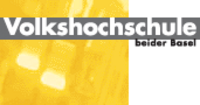Sites of cooperation: the university and city
Many diverse examples of cooperation demonstrate how the city and its citizens have consistently called upon the university to be engaged in the city, and how the university in turn has actively sought to build ties to the city by fostering exchange.
Cooperation between political-administrative institutions and university bodies has taken place and continues to take place at various levels and in different configurations. These opportunities have come from anniversaries, festivals, associations, and many other such events or initiatives. But they have also been spurred by tragedies such as the chemical fire in the Schweizerhalle, which led to the founding of the program dubbed “Mankind-Society-Environment.“ External partners and supporting institutions play a crucial role in the university's endeavors, in many cases as initiators or leaders of joint projects.
The various programs the university has offered to the general public for a number of years now have a slightly different focus. With the diverse initiatives and lectures in the Seniors’ University, the Saturday University, the Children’s University, the Café Scientifique, and the cooperation with the Volkshochschule, the university is opening itself up to citizens while also staying active in its core domain: the communication of its own research.
Finally, collections and museums are another field that has traditionally been a site of cooperation between the university and the public. Individual collections have given rise to university-owned museums, while many university scholars conversely work on collections held by the city’s major museums – the Kunstmuseum (Art Museum), the Historical Museum, the Museum der Kulturen (Museum of Cultures), and the Natural History Museum. Here, too, research and outreach are closely intertwined and have led to innovative joint projects for several years.





